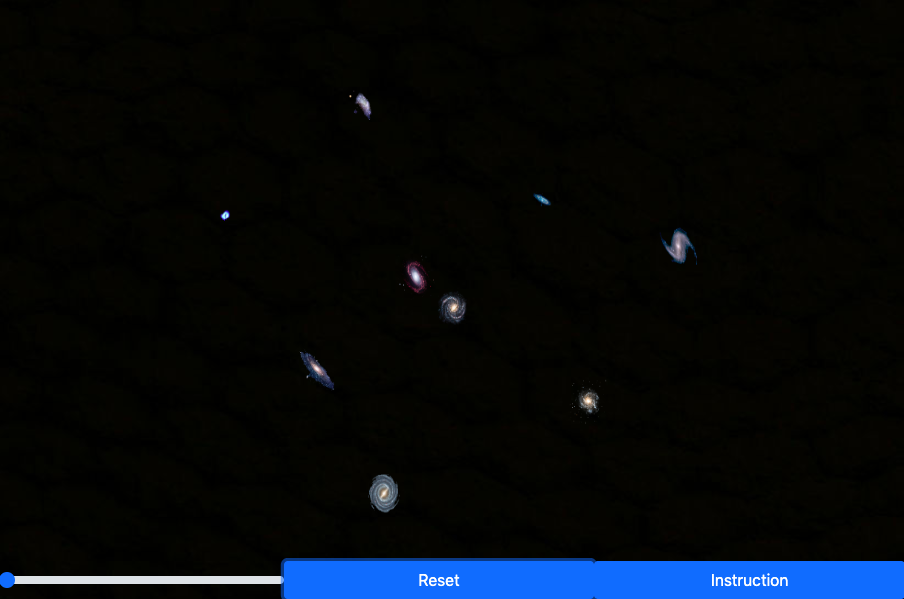

Click on either image to begin
Galaxies are moving away from us, and more distant galaxies are receding more rapidly (Hubble's law). It is natural to assume this means we are at the center of expansion, but we can easily build a model which shows that observers everywhere will observe the same phenomenon. We need not be in a special location; indeed, given the number of times human beings have been wrong about this (the Earth is not the center of the universe; the Sun is not the center of the universe; etc) and the fact that we live in a completely mundane region in terms of anything else we can measure (temperature, density, etc), we strongly prefer a model in which we are not in a special location.


This animation ( Flash version by Rudy Huezo or Javascript version by Isabelle Ye) lets you get your hands on the cosmic expansion. Two images are overlaid, taken at two different times, and the universe has expanded a bit during that time. You can see Hubble's law: the more distant galaxies have traveled farther from their original positions during that time, so they must have higher velocity.1 This shows you the observations of those who remain in the central galaxy during the time between snapshots. But what about observer sitting in other galaxies? Grab and slide the expanded image so that some other galaxy appears to be stationary. What happens to the other galaxies? They also observe Hubble's law! There is no trick here; this just happens when you magnify an image or a region of space.
In summary, there is no evidence that we are at the center of anything, and we can easily construct a model which predicts that any observer would see observe Hubble's law. In fact, there is no center. There is no evidence that any location is special, and if you shrink the image to a point, then all points are at the same location and none of them deserves to be called a center of anything.